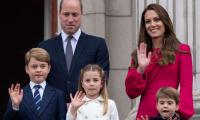Despite the Kashmir situation, which led to widespread outrage against the brutal repression of the Kashmiris by the Indian armed forces, and the ensuing isolation, Prime Minister Imran Khan found it convenient to exhibit his skills at mediation between the two opposite poles of the Muslim ummah – Saudi Arabia and Iran.
With this double burden, Khan is undertaking shuttle diplomacy without having much leverage over the two regional giants that face each other across a most troubled and enigmatic region.
After his talks in Iran, Supreme Leader of Iran Ayatollah Khamenei had reminded Khan that “the relations of the two countries should be better than what they currently are. Security of the border should be enhanced, and suspended projects like the gas pipeline should be completed”. I am keeping my fingers crossed about what kind of response awaits the PM in Riyadh since the Saudis have very high expectations from an indebted Islamabad.
Devastated by a lethal missile attack which knocked out more than half of its oil output and stunned by Trump’s foot-dragging over retaliating against the alleged perpetrators, the Saudis are in a great hurry to cover their flanks. They are now on a spree of buying favours from the US for its prepaid troops and Russia which is ready to provide its superior anti-ballistic missile system to save its oil wells from intruding precision missiles.
Khan’s visit to Riyadh was preceded by a visit by a shrewd Putin who is in a much better place to talk to Iran – his ally in Syria – than anybody else, especially after the US ditched its Kurdish allies, allowing thousands of Isis militants to escape and regroup and prompting Turkey to get into the Syrian conflict against the Kurd-dominated Syrian Democratic Force that has now sought Russia-Iran-backed President Bashar al-Assad’s military support. The real headache for the Saudis is their unwinnable war in Yemen against a very well-organized Houthi militia which is said to be backed by Iran.
The Houthis had taken responsibility for the missile attack and had captured more than two divisions of Saudi forces recently. They have offered a missile truce, welcomed by Iran, if the Saudis stop their air strikes on Yemen; this can then boost UN efforts to restart talks. Despite harsh sanctions by the US and Trump’s abrogation of the nuclear deal (JCPOA) between Iran and the P5+1, Tehran has kept the support of the other five powers while surviving the hardships and consolidating its position from Iraq, Yemen, Syria to Lebanon.
This leaves the Saudis and other Gulf states in a difficult geo-strategic environment. Iranian President Rouhani has touted a Gulf peace plan (the Hormuz Peace Endeavour – HOPE), premised upon the pullout of US troops from the Persian Gulf and “the termination of aggression in Yemen, rather than inviting foreigners”. Without the lifting of sanctions and “return to commitments and compliances” of the nuclear deal (JCPOA), Iran is not inclined to talk to Trump, despite EU efforts.
On the other hand, there has been a warming up of relations between the Gulf States and Israel which is now desperate to sign ‘non-aggression’ agreements with the Gulf emirates to primarily fight ‘common foe’ Iran. In such an environment, PM Khan’s initiative seems to be a non-starter, other than reinforcing friendly neutrality in the conflict. These are not the 1970s when a leader of Zulfikar Ali Bhutto’s stature could rally all from across the Muslim world. We, however, still hold on to ideas of leading the Ummah which remains an elusive pipedream.
The idea of becoming a ‘facilitator’ has eclipsed the big changes emerging in not only an increasingly multipolar world, but also in the relationship between our two big neighbours. The ‘Wuhan spirit’ was built on the ‘Chennai connect’ to reset Sino-Indian relations by President Xi Jinping and Prime Minister Narendra Modi in their second informal summit after 18 months at the ancient temple city of Mahabalipuram.
Faced with the lowering of growth rates, both China and India were mindful of how ‘shared progress’ could be achieved and opportunities expanded. Indeed, the difference in the economic fortunes of China ($14.2 trillion in 2018 at the rate of 6.2 percent in 2019) and India ($2.97 at the rate of five percent in 2019) is huge. They could still boost their falling growth by expanding the scope of bilateral economic collaboration, and have agreed to adopt a mechanism at a higher level.
Modi must have raised his concerns about China’s huge trade surplus with India which climbed to $57.7 billion out of the annual bilateral trade of 95.5 billion in 2018, and asked for investment and greater market access. Xi must also be keen for greater investment in India, but also from India in China amid the US-China trade war. Despite being prompted by the US to emerge as a countervailing force in India-Pacific region, India is neither getting a fair deal from the US, nor has the capacity to counter China. Modi failed to lure Trump into a trade deal that he wanted, and might face financial retribution from the US to compensate for the US trade deficit.
When Modi was to raise his trade deficit with China, Chinese Vice President Leu He had struck the first phase of a trade deal with the Trump administration in Washington, stalling an increase in tariffs from 25 to 30 percent on $250 billion Chinese goods in exchange for $50 billion import of agricultural goods. The prospects of a trade war between the two big economies could further reduce, depending on the agreement on crucial issues of the US trade deficit of $419 billion with China, currency, copyrights, trade practices, etc.
The world economic map is changing with the phenomenal rise of China and other fast growing Asian economies. Out of the top 500 big corporations, in the lead are now 129 Chinese firms leaving behind the US with 121 companies. In the next five to ten years, China could be leading the world economy – and bringing Asia on the top of the world with India trailing behind China. These developments are going to change the financial and strategic architecture of the world, and most importantly our own region.
Since China and India are keen to not let their differences become disputes, they have set a course that will be crucial to regional economies and the strategic environment. Mindful of Pakistan’s apprehensions, the Chinese leadership invited the prime minister to Beijing to take Pakistan into confidence. Though China reiterated its traditional stand on Kashmir, it called for resolution of disputes through bilateral dialogue. The Chinese leadership has been telling Pakistan to take a cue from the Sino-Indian model of managing differences in order to move forward in trade and other areas of possible collaboration.
President Xi did inform Modi about what the Pakistan side had conveyed to him, even though India insists that the K word did not come up. Immediately after the Indian action in IOK on August 5, the Indian external affairs minister had rushed to Beijing to assure his counterpart there that the measures taken were not going to affect the Line of Actual Control and Aksai Chin.
With a GDP of $312 billion and expected growth rate of 2.4 percent and continuation of stagflation in the next two to three years, Pakistan will remain under the watch of the IMF and FATF. It’s better for us to set our economic house in order and let the constitution takes its course to settle political crises without any extra-constitutional measures. Let the doors be opened for a frank dialogue on everything possible, otherwise events may take over us.
The writer is a senior journalist.
Email: imtiaz.safma@gmail.com
Twitter: @ImtiazAlamSAFMA
As usual, any such deal, aiming to resuscitate ailing economy, brings to fore urge and resolve to halt further...
A representational showing sticky notes on a board. — Unsplash/FileThere are some common themes from the lives...
Whether the Daanish Schools effort has been able to live up to its principles or not may be debatable
According to the federal government, last year 653,100 people experienced homelessness on a single night in America
Another advantage for Pakistan is the enhanced teledensity and internet penetration
Both media spheres need to dovetail in amplifying the urgency of addressing climate change at the local, national, and...







